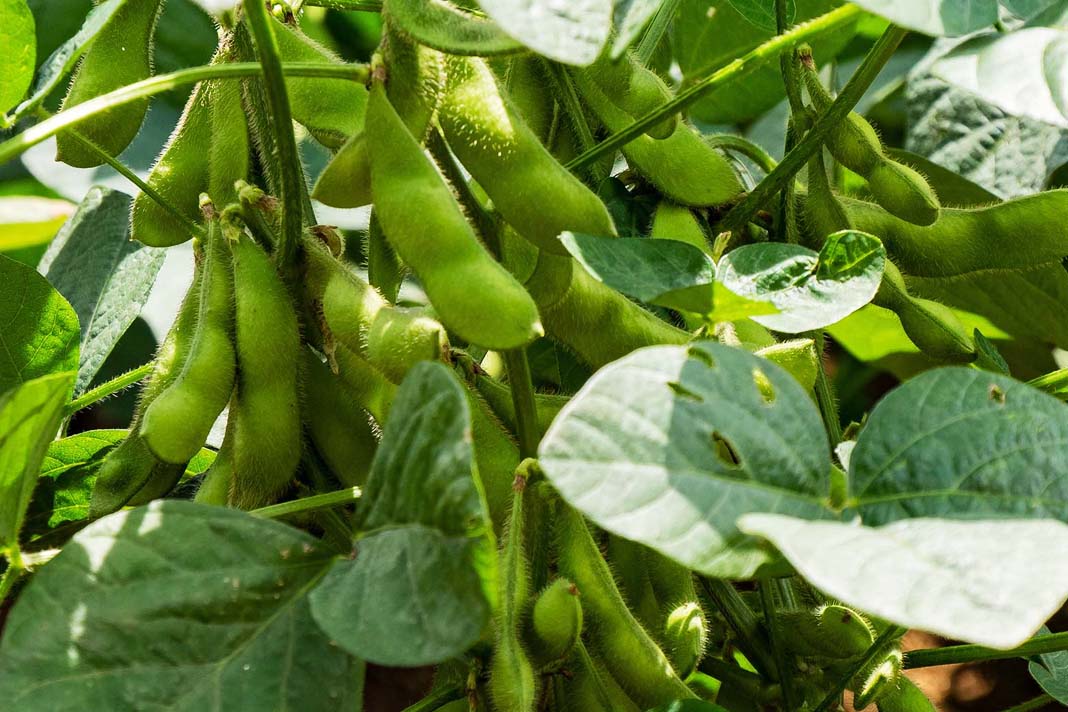2023/24 Brazil Soybeans 50.6% Planted vs. 59.6% Average

Brazil soybeans were 50.6% planted as of late last week compared to 64.6% last year and 59.5% average according to Patria AgroNegocios. This represents an advance of 11.5% for the week. The planting progress is very irregular with some farmers done planting while others are still waiting for rain to plant their soybeans.
Some soybeans need to be replanted in central Brazil as well as in southern Brazil making the crop even later than it is already. Replanting in central Brazil could impact the safrinha corn while replanting in southern Brazil would not have much of an impact on safrinha corn since there is not much planted in Rio Grande do Sul and Santa Catarina.
Below normal rainfall during the growing season could still be enough to produce an average crop if the timing is right. Since the soils in central Brazil have poor water holding capacity, a week without rain during pod filling could result in moisture stress and reduced yield potential.
We also need to watch for delayed soybean planting in southern Parana, Santa Catarina, and especially Rio Grande do Sul.
The soybeans in the state Mato Grosso were 83.3% planted as of late last week compared to 93.5% last year and 88.6% average. This represents an advance of 13% for the week. The fastest planting pace is in the mid-north where 98% of the soybeans have been planted. The slowest planting is in the northeast with 66.8% planted and the southeast with 69.8% planted.
Farmers are reporting that maybe as much as 10% of the soybeans in the state may need to be replanted. Most of the replanted soybeans will be the earliest planted soybeans that suffered from hot and dry conditions after planting. There are also reports that some farmers who intended to plant safrinha cotton after soybeans may not replant their soybeans, but instead tear up their soybeans and just plant cotton. Their reasoning is if they replanted the soybeans now, there would not be time to plant safrinha cotton or maybe not even time to plant safrinha corn.
Below is the 2023/24 soybean planting progress in Mato Grosso (red line) from the Mato Grosso Institute of Agricultural Economics (Imea).

Soybeans in Parana were 75% planted as of late last week compared to 76% average and the soybeans were rated 1% poor, 7% average, and 92% good. For the first few weeks of the growing season, the soybean planting had been the fastest in the last five years, but wet weather has slowed the planting to the average pace.
The soybeans in Rio Grande do Sul were 3% planted as of late last week compared to 18% average according to the Department of rural Economics (Deral). The delayed planting is due to excessive wetness. The planting pace is about equal to last year when the state experienced a severe drought and approximately 15% behind average. Planting is slowest in the northern and western parts of the state.
Most of the soybeans in the state are planted after the winter wheat is harvested, but the wet conditions are slowing the wheat harvest. Emater estimates that 58% of the wheat has been harvested and that 40% of the wheat is maturing and 2% is filling grain.
Rio Grande do Sul is usually one of the last regions in Brazil to plant soybeans and the ideal planting window for soybeans in the state closes about November 12th, so only a fraction of the soybeans will be planted by that date. In the municipality of Carazinho in northern Rio Grande do Sul, only 10-15% of the soybeans have been planted and the ideal planting window will close in less than a week.
Farmers in the state will plant their soybeans almost regardless of how late it becomes because there is no other alternative. Soybeans planted late in the state are at increased risk of reduced solar radiation during the pod filling period with the potential of frost occurring before the crop matures.
Rio Grande do Sul is the third largest soybean producing state in Brazil after Mato Grosso and Parana and Emater is estimating that farmers in the state will plant 6.74 million hectares of soybeans (16.6 million acres) in 2023/24.
Soybeans in Goias were 49% planted late last week compared to 58% average. Some of the early planted soybeans may need to be replanted. Farmers are concerned that their safrinha corn will be planted later than desired.
Soybeans in Mato Grosso do Sul were 67% planted compared to 75% average. The slowest planting is in the northern part of the state on the border with Mato Grosso where the weather has been the driest.
Wet weather in Santa Catarina continues to slow soybean planting in the state where 22% of the soybeans have been planted compared to 48% average.
Recent rainfall in Minas Gerais has helped recharge some of the soil moisture and soybeans are 31% planted compared to 42% average.
Soybean planting in Sao Paulo has been progressing at a normal pace with 57% of the crop planted compared to 57% average.
Some of the slowest planting continues to be in northeastern Brazil where the soybeans in Bahia were 5% planted (31% average), Tocantins 15% planted (33% average), Maranhao 2% planted (16% average), and Piaui 2% planted (18% average). The rainfall in northeastern Brazil improved somewhat over the weekend, but it is still irregular and temperatures have been above normal.
Read also
Wheat in Southern Brazil Impacted by Dry Weather and Frosts
Oilseed Industry. Leaders and Strategies in the Times of a Great Change
Black Sea & Danube Region: Oilseed and Vegoil Markets Within Ongoing Transfor...
Serbia. The drought will cause extremely high losses for farmers this year
2023/24 Safrinha Corn in Brazil 91% Harvested
Write to us
Our manager will contact you soon



